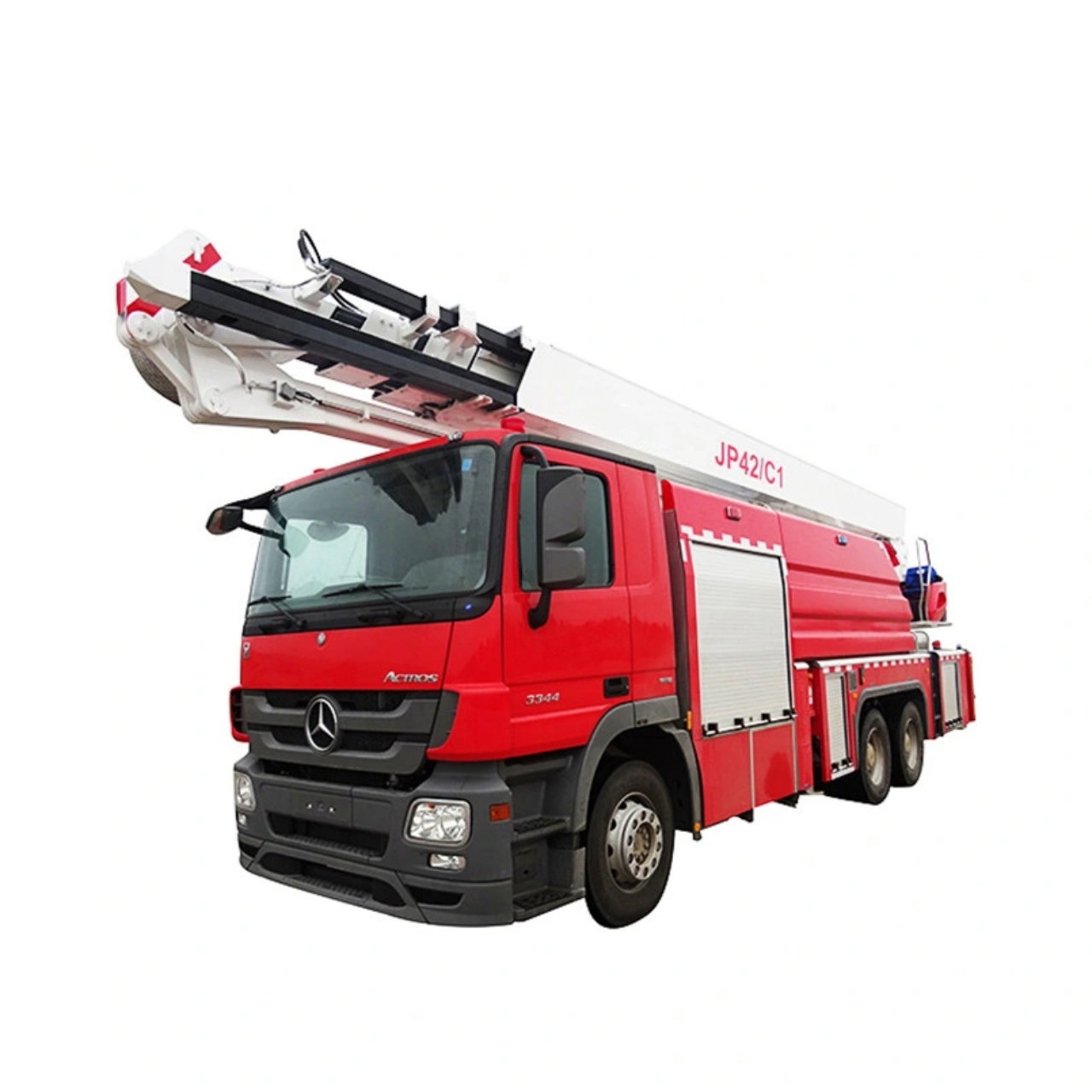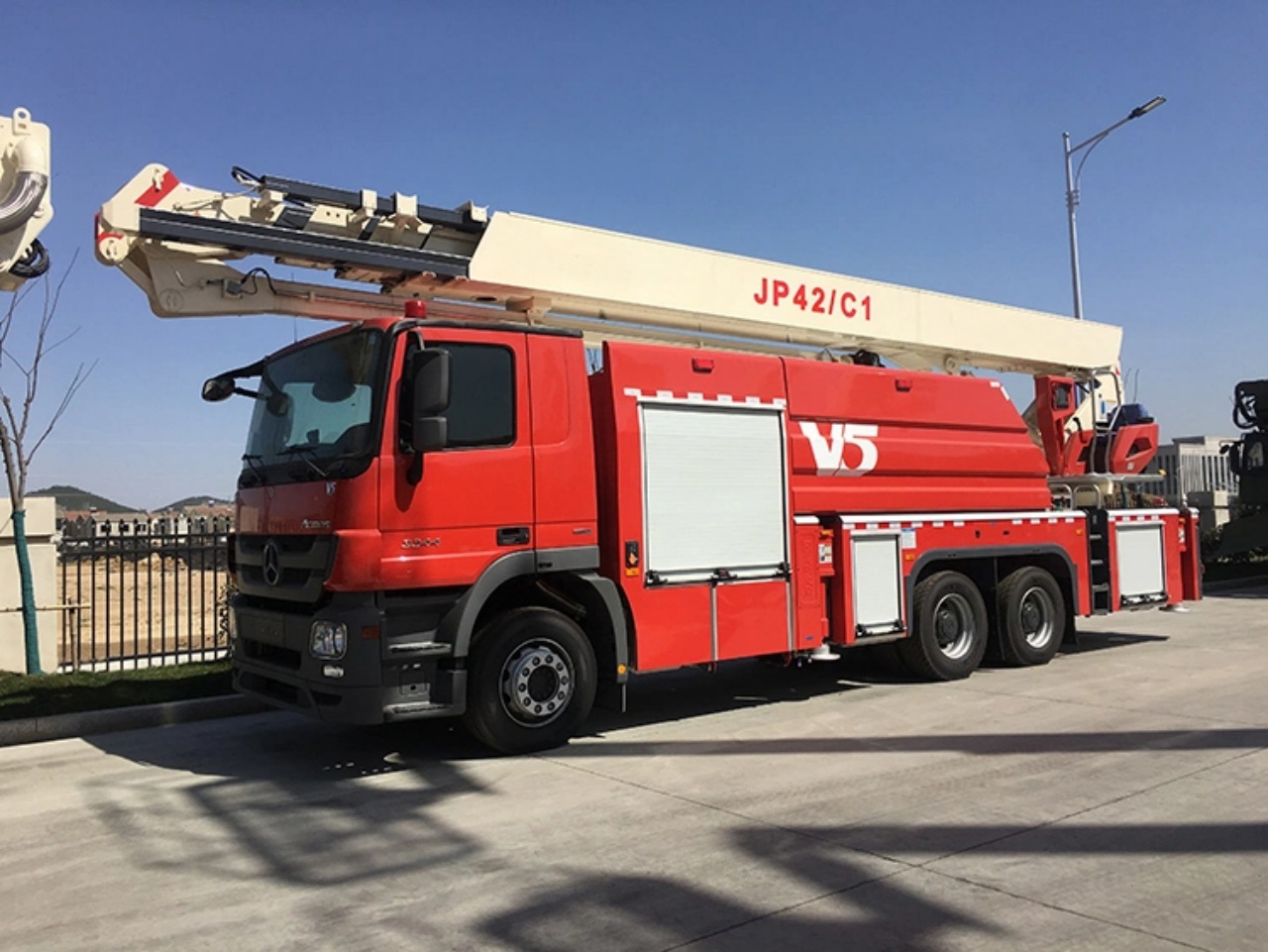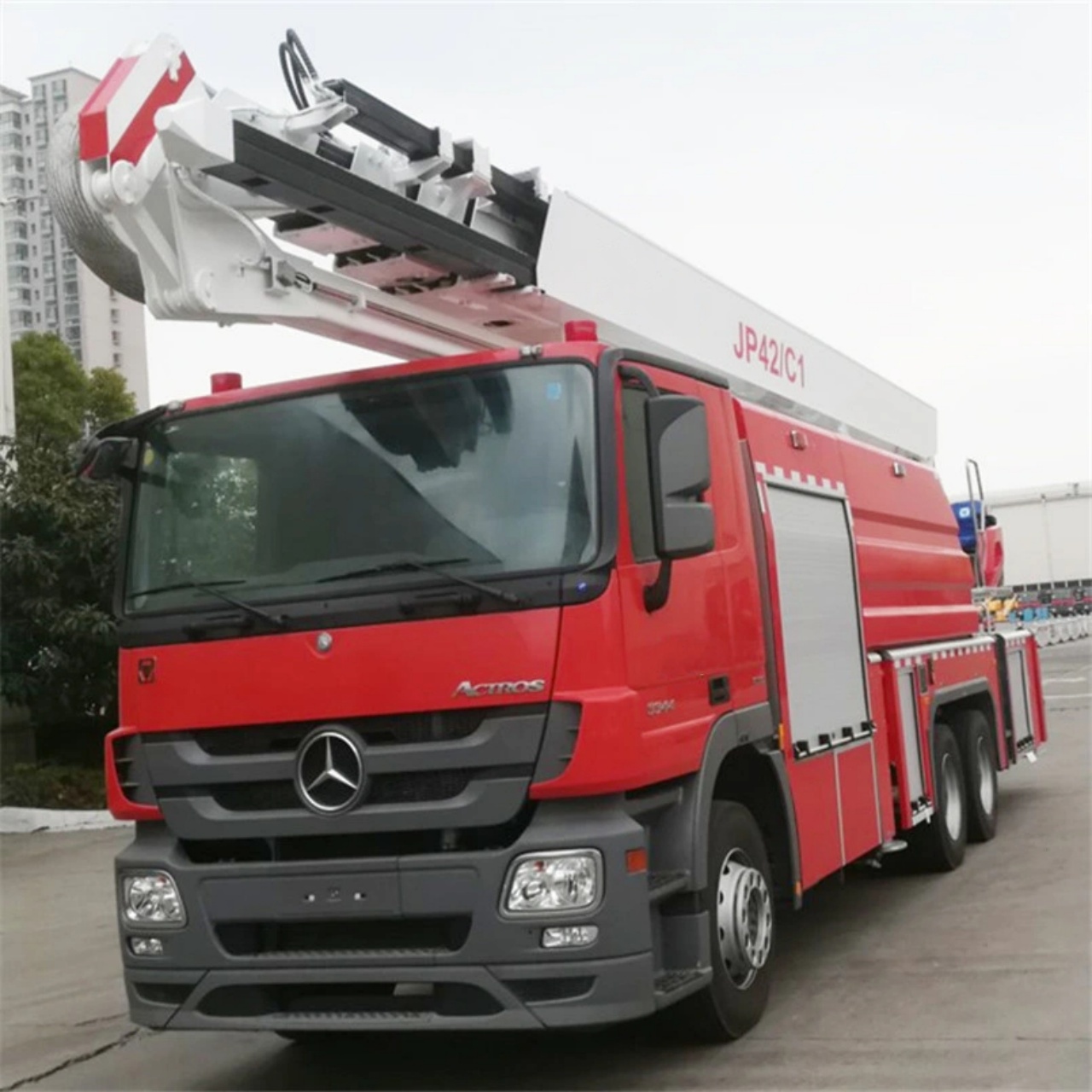When a fire truck races by with sirens blaring, most people only notice the flashing lights and the urgency. But few realize that not all fire trucks are the same. 2 of the most essential vehicles in firefighting are the fire engine and the ladder truck. While they often respond together to emergencies, they are distinct in purpose, equipment, and role. Understanding the difference between a fire engine and a ladder truck helps us appreciate the complexity and coordination required in firefighting.
The Fire Engine: The Workhorse of Firefighting
A fire engine, often simply called a “pumper,” is primarily designed to pump water to extinguish fires. Its main purpose is to suppress fires by delivering water and, sometimes, foam onto the flames. Fire engines are among the first vehicles to arrive at the scene of an emergency, and they are equipped with the tools necessary for basic firefighting operations.
Key Features of a Fire Engine:
- Water Tank and Pump: A fire engine carries a large water tank, usually between 500 and 1,500 gallons, and a powerful pump capable of moving water at high pressure. Firefighters can use the water from the onboard tank or connect to external water sources such as fire hydrants.
- Hoses: Fire engines are equipped with multiple hoses, varying in size and purpose. Attack hoses are used to directly combat fires, while supply hoses transport water from hydrants or other engines.
- Basic Rescue Tools: Engines often carry a variety of tools for forcible entry, basic search and rescue, and initial medical care. These include axes, crowbars, thermal imaging cameras, and basic first aid kits.
- Personnel: Typically, a fire engine crew includes a driver (engineer), an officer, and 1 to 3 firefighters. They are trained to immediately begin fire suppression, perform rescues, and administer emergency medical aid.
Common Scenarios for Fire Engines:
- Residential or commercial structure fires
- Vehicle fires
- Wildland fires
- Car accidents requiring fire suppression or minor extrications
The fire engine is truly the backbone of most fire departments. Its primary mission is to stop the fire quickly, protect lives, and minimize property damage.

The Ladder Truck: The Specialist for Heights and Rescue
A ladder truck, also known as an “aerial truck” or simply a “ladder,” serves a very different role. Ladder trucks are designed for reaching high places, performing technical rescues, and providing elevated streams of water to assist in firefighting.
Key Features of a Ladder Truck:
- Aerial Ladder: The most defining feature of a ladder truck is its long, extendable ladder mounted on the vehicle. The ladder can often extend 75 to 100 feet or more, allowing firefighters to reach upper stories of buildings, rooftops, and elevated industrial sites.
- Platform or “Bucket”: Some ladder trucks have a platform at the end of the aerial ladder (these are called “tower ladders” or “platform trucks”), which offers a stable working area for firefighters.
- Ground Ladders: Ladder trucks carry numerous portable ladders of various lengths to allow access to different parts of a structure.
- Rescue and Ventilation Equipment: Ladder trucks are heavily stocked with specialized tools for technical rescues, ventilation (such as chainsaws and fans), and sometimes heavy-duty extrication.
- Personnel: A ladder truck crew typically includes a driver (called a tillerman if the truck is a “tiller” with a steerable rear), an officer, and several firefighters. Their focus is on search and rescue, ventilation, and support tasks rather than direct firefighting.
Common Scenarios for Ladder Trucks:
- High-rise fires where upper floors must be reached
- Ventilation operations to release smoke and heat
- Rescue of people trapped above ground level
- Elevated water streams to fight large or inaccessible fires
In essence, ladder trucks bring a unique set of capabilities to incidents where simply having water and hoses is not enough.
Key Differences Summarized
| Feature | Fire Engine | Ladder Truck |
|---|---|---|
| Primary Role | Fire suppression | Rescue, ventilation, elevated operations |
| Main Equipment | Pump, water tank, hoses | Aerial ladder, ground ladders, rescue tools |
| Water Capacity | Yes (500–1500 gallons) | Usually none (or minimal, unless it’s a “quint”) |
| Specialized Rescue Tools | Basic set | Extensive set |
| Crew Focus | Fire attack, initial medical aid | Search/rescue, ventilation, access |
Variations: Quints and Mixed Designs
In some departments, especially smaller ones, hybrid vehicles known as “quints” (short for 5 functions: pump, water tank, fire hose, aerial ladder, and ground ladders) are used. Quints attempt to merge the roles of engines and ladder trucks into one vehicle, allowing more flexibility with fewer resources.
However, most large cities prefer specialized apparatus because each type of vehicle can focus on its task without compromise. Specialization often leads to more effective fireground operations, especially in complex or large-scale emergencies.
Working Together: Engines and Ladders on Scene
At the scene of a structure fire, engines and ladders have complementary roles. Engines pull hoses, secure the water supply, and initiate interior fire attacks. Ladder trucks, meanwhile, perform “vent-enter-search” (VES) maneuvers, ventilate the structure to improve visibility and conditions inside, and rescue trapped occupants.
In urban firefighting, it is common to assign an engine company and a ladder company to work closely together, forming a “fire attack team” and a “rescue/ventilation team.” The coordination between these crews is critical and often saves lives.

Conclusion
Although fire engines and ladder trucks are often lumped together in the public imagination, they perform very different, yet equally vital, functions. The fire engine is primarily responsible for extinguishing fires and providing initial emergency medical aid. The ladder truck specializes in reaching high places, rescuing people, and ventilating structures to make firefighting operations safer and more effective.
Understanding the difference between a fire engine and a ladder truck not only deepens our appreciation for the expertise of firefighters but also highlights the strategic complexity of emergency response operations. The next time you see a fire truck rushing down the street, you might just recognize whether it’s an engine ready to battle flames or a ladder truck preparing to reach for the sky.









